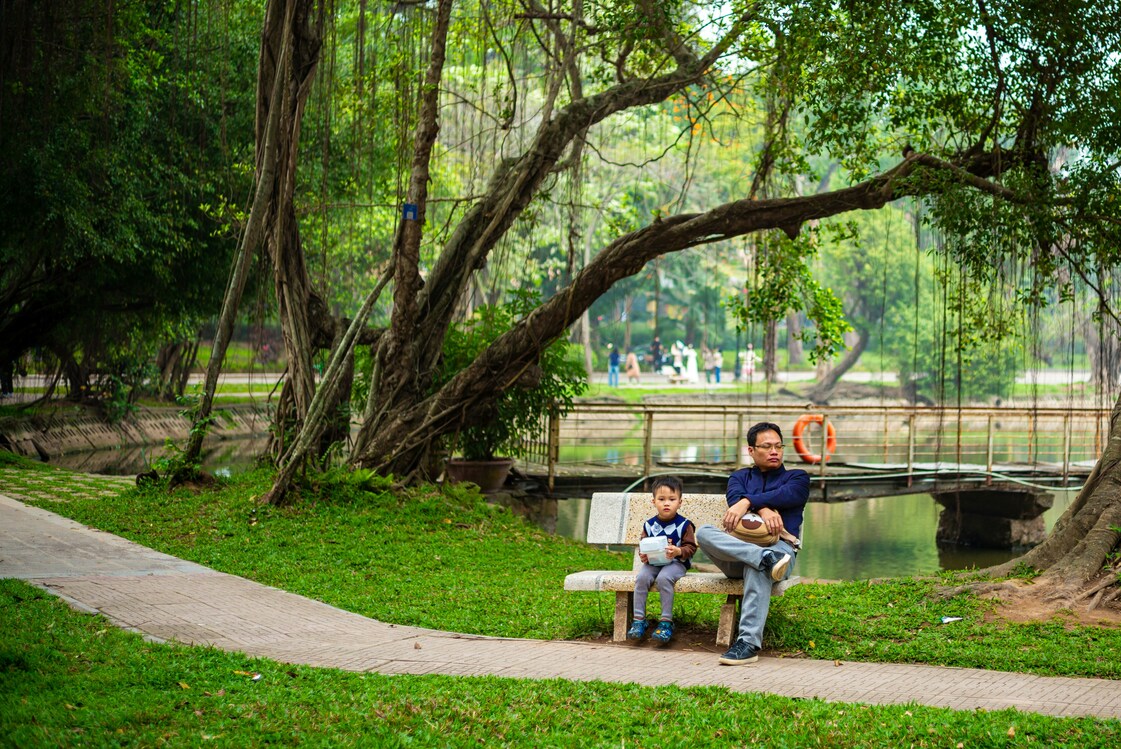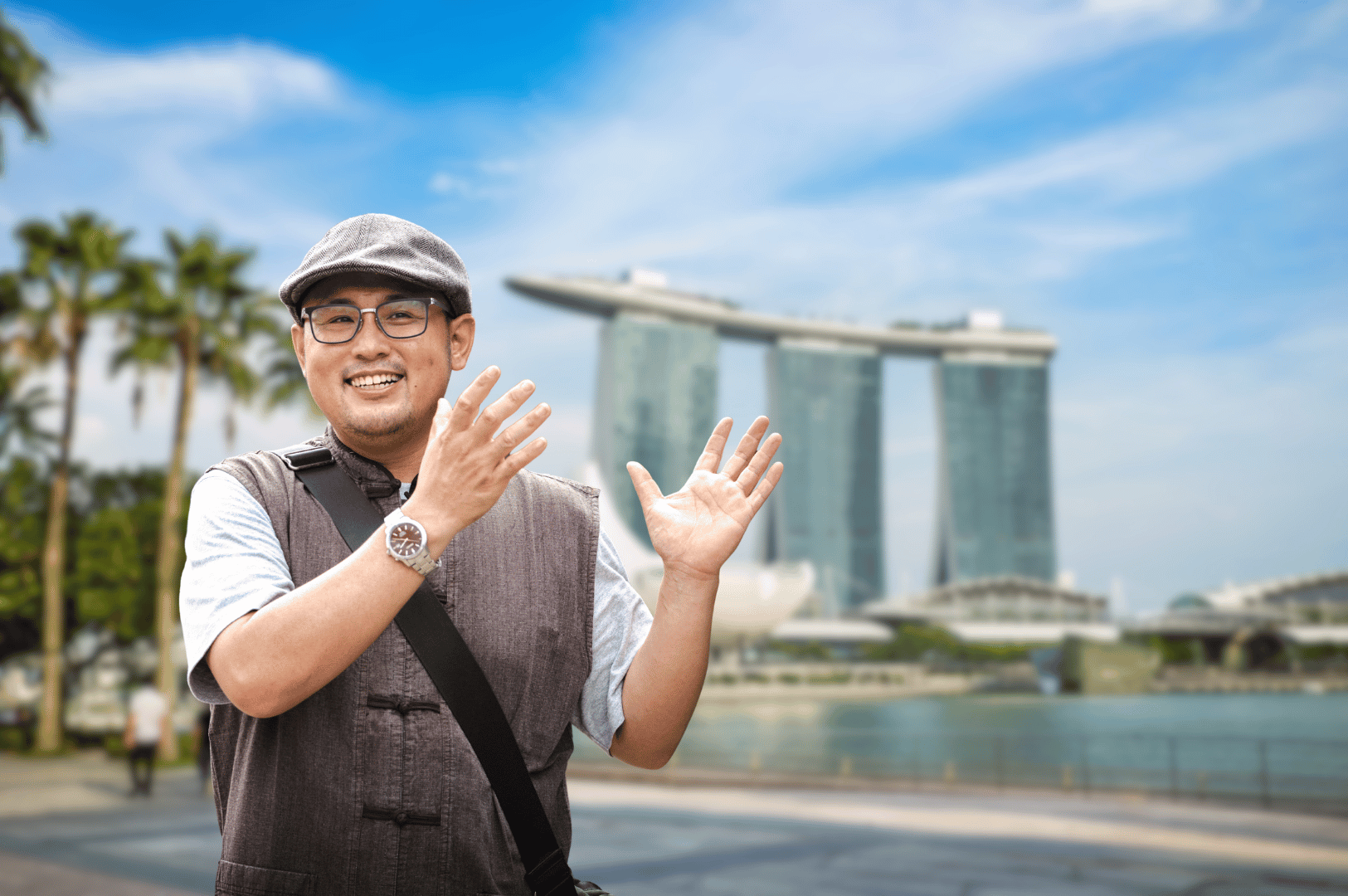In this Singapore travel guide, we’ll explore three legendary areas: Chinatown Singapore, Kampong Glam, and Little India Singapore. Expect colorful temples, bustling markets, incredible street food, and stories waiting around every corner.
Singapore’s Cultural Mosaic
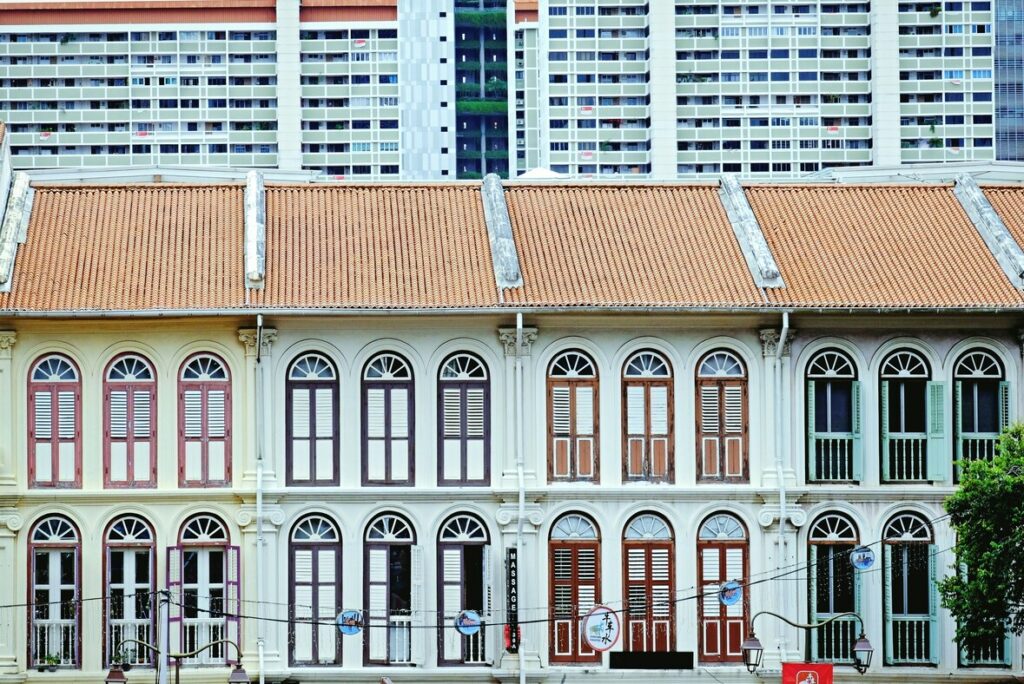
Singapore’s rich harmony grew from centuries of migration and trade. In 1822, the British colonial administration mapped out districts for each community: the Chinese by the Singapore River, forming the heart of the Chinese community in what became Chinatown, Malays and Arabs around the Sultan’s palace, and Indians near Serangoon.
“To walk Singapore’s heritage districts is to stroll through centuries of hope, struggle, and celebration.”
Introduction to Heritage Districts
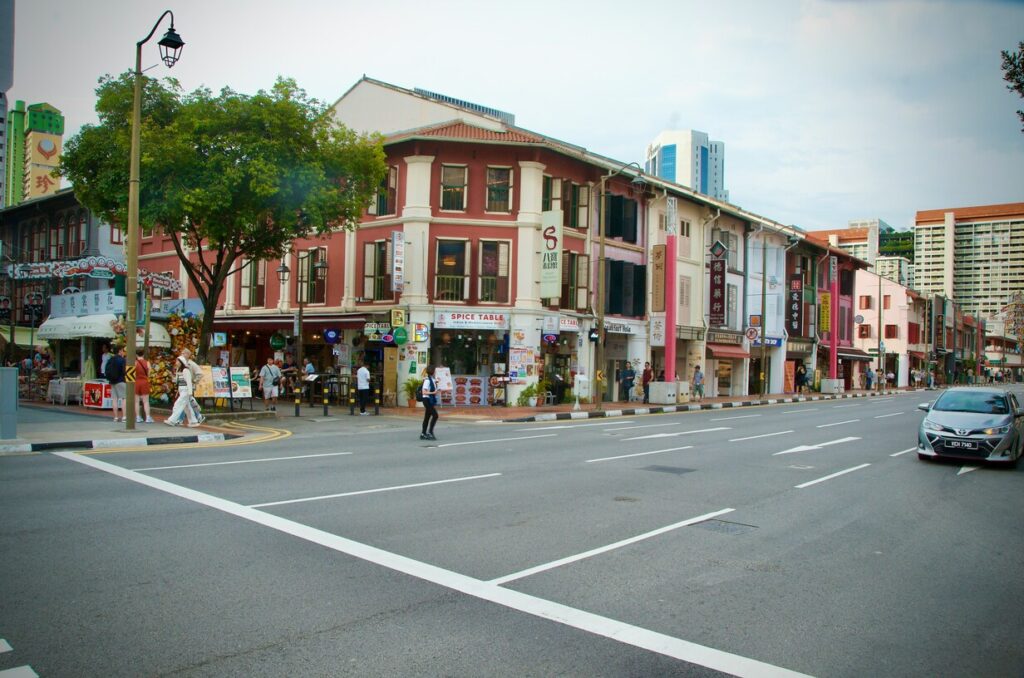
Singapore’s heritage districts are living time capsules, carefully preserved to showcase the city’s rich tapestry of cultures and history. These neighborhoods—Chinatown, Little India, and Kampong Glam—invite you to wander through streets where the past and present blend seamlessly. In Chinatown, you’ll find bustling lanes lined with traditional Chinese medicine shops, the majestic Buddha Tooth Relic Temple, and rows of traditional shophouses that echo the city’s early days. Little India dazzles with its vibrant street stalls, colorful architecture, and the irresistible aromas wafting from Indian restaurants. Meanwhile, Kampong Glam stands out for its grand mosques, such as the iconic Sultan Mosque, and beautifully restored shophouses that reflect Singapore’s Malay and Arab heritage.
Each district tells its own story through its architecture, shops, and lively streets, making them essential stops for anyone eager to experience the true heart of the city.
Chinatown Singapore: Where Tradition Meets Modernity
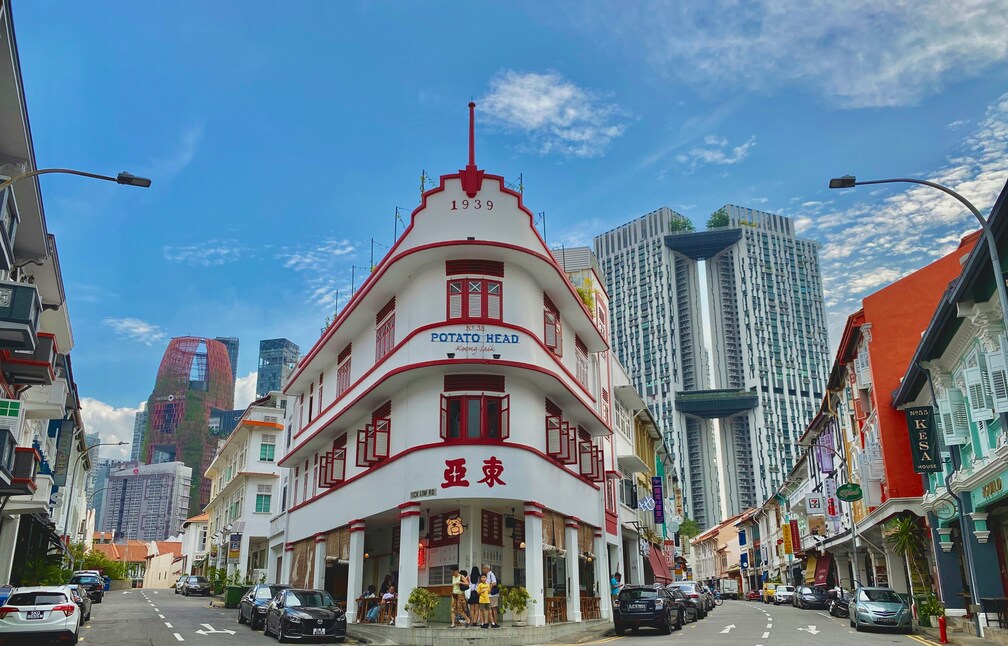
The scent of incense and sizzling noodles floats through Chinatown’s lanes, where lanterns hang above a mix of heritage temples, bustling hawker centres, and trendy cafés. Take the time to explore Chinatown and discover its unique blend of tradition and modernity.
Historical Significance
Once a landing point for Chinese immigrants, Chinatown Singapore flourished with clan associations, bustling markets, and ornate shophouses. Today, restored five-foot-way arcades and colorful streets like Ann Siang Hill, Club Street, Telok Ayer, Sago Street, Smith Street, Trengganu Street, and South Bridge Road blend tradition with modern lifestyle. The area is characterized by predominantly two- and three-storey shophouses, reflecting its rich architectural heritage.
Must-Visit Landmarks
- Buddha Tooth Relic Temple – A Tang-style temple housing a sacred relic, notable for its traditional Tang Dynasty Buddhist architectural style.
- Sri Mariamman Temple – Singapore’s oldest Hindu temple with a vivid gopuram.
- Chinatown Heritage Centre – Re-created shophouse homes trace the struggles of early settlers.
- Thian Hock Keng Temple – One of the oldest Hokkien temples, renowned for its distinctive architectural style.
- Jamae Mosque – One of the oldest mosques in Singapore, featuring a main prayer hall as the central worship space and serving as a symbol of coexistence.
These religious buildings are key landmarks in Chinatown, reflecting the district’s diverse spiritual heritage and architectural significance.
Food to Try
- Maxwell Food Centre – Famous for Tian Tian’s Hainanese chicken rice and smoky char kway teow.
- Chinatown Complex Food Centre – Hundreds of hawker stalls with local specialties.
“Chinatown Singapore proves that tradition and reinvention can not only coexist, but create magic on a plate.”
Shopping & Tips
Souvenir shopping is a key activity in Chinatown, where you can shop for calligraphy, cheongsams, tea leaves, and quirky souvenirs at the bustling Chinatown Street Market. The vibrant street market stalls line the streets, offering a lively shopping environment filled with local culture and a variety of vendors. Many shops are housed in beautifully preserved heritage shophouses, adding to the area’s charm and providing a unique backdrop for your shopping experience.
Chinatown offers a wide selection of shopping and accommodation options, making it a great place for exploring local culture and finding authentic keepsakes. Visit in the evening for the most vibrant atmosphere.
Travel Tip: Take the MRT to Chinatown Station. Mornings are calm; nights glow with lanterns and street markets.
Kampong Glam: The Malay-Arab Quarter
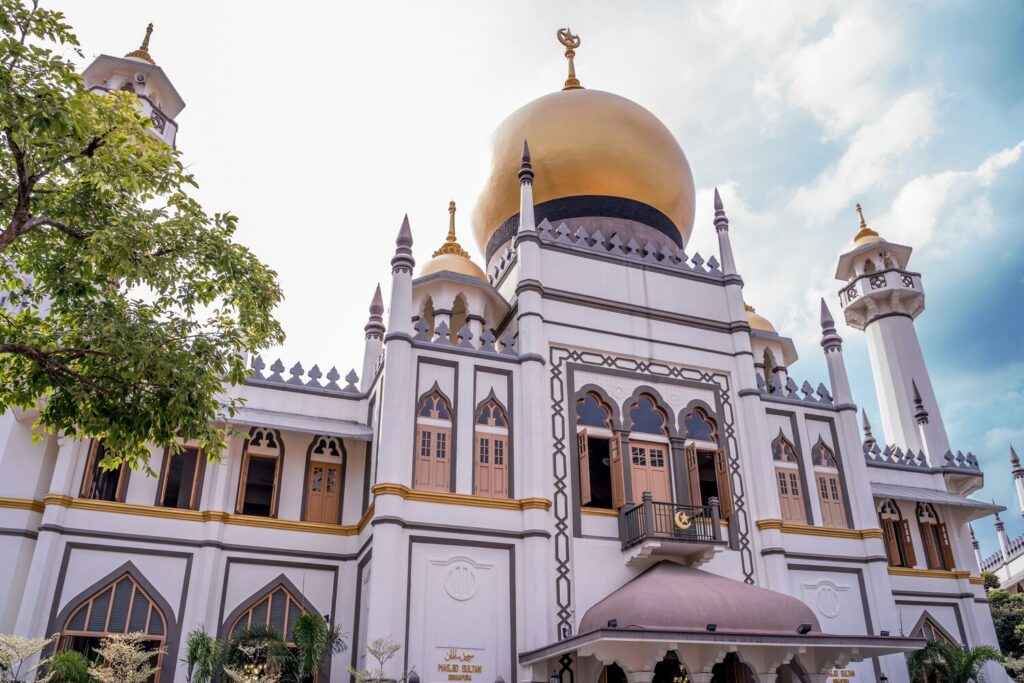
Eclectic and colorful, Kampong Glam mixes Malay royal history with bold street art and hip cafés. The area is renowned for its preserved buildings, many of which showcase the early shophouse style of the 1840s, characterized by simple and unadorned facades. As the district evolved, the art deco shophouse style also became prominent, adding to the architectural diversity. Once home to Malay rulers and Arab traders, it’s now a blend of heritage and creativity, with some restored buildings retaining original features, if any, such as canopies or vents.
Key Attractions
- Sultan Mosque – Its golden dome is the heart of the district.
- Malay Heritage Centre – Exhibits on Malay culture in the former Sultan’s palace.
- Haji Lane – Famous for murals, indie boutiques, and lively cafés.
Travel Tip: Dress modestly for mosque visits. MRT: Bugis Station. Weekday afternoons are best for quiet exploration.
Little India Singapore: A Festival of Senses
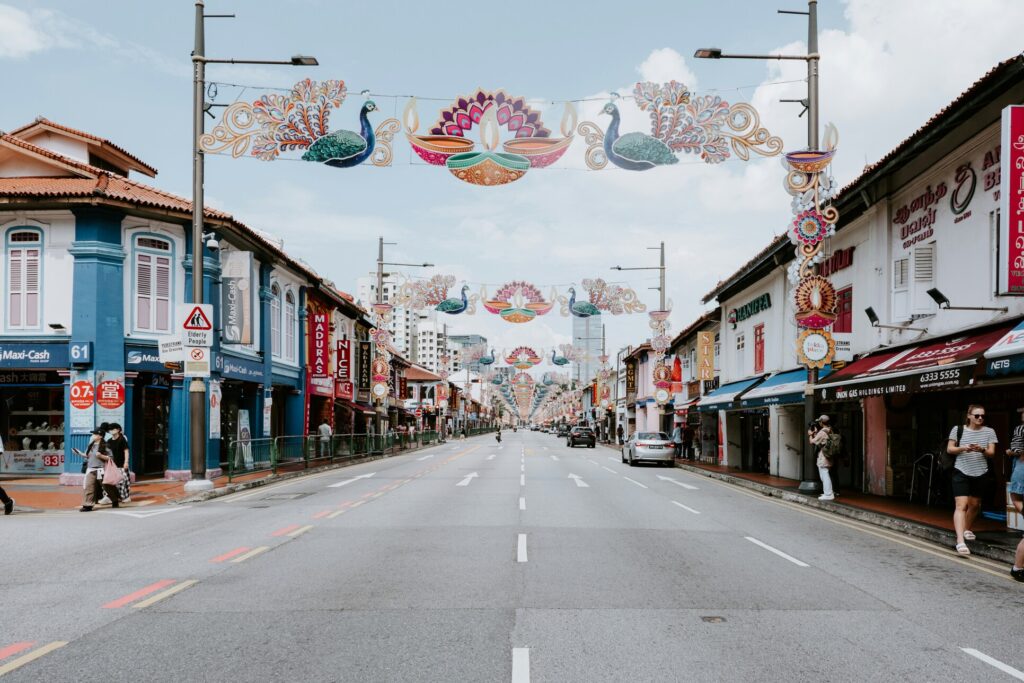
Step into Little India Singapore, a great spot for experiencing authentic local culture, and you’re surrounded by flower garlands, Bollywood music, and spice-laden air. Along Serangoon Road, every corner brims with energy.
Landmarks
- Sri Veeramakaliamman Temple – Dedicated to Kali, dazzling with vibrant carvings.
- Abdul Gaffoor Mosque – A national monument with striking architecture.
- Tekka Centre – Market, hawker centre, and shopping hub all in one.
- Indian Heritage Centre – A modern museum of the Indian diaspora in Singapore.
Food Journey
Banana leaf rice, biryani, crisp dosai, and butter chicken await. Try Komala Vilas for vegetarian dishes or Race Course Road for North Indian cuisine.
Shopping
Spices, gold jewelry, colorful textiles, and incense line Serangoon and Campbell Lane. For everything under one roof, visit the 24-hour Mustafa Centre.
“Little India is where Singapore’s multicultural roots are set alight in a festival of flavors and colors.”
Travel Tip: Best explored on foot. MRT: Little India or Farrer Park.
Activities and Events in the Heritage Districts
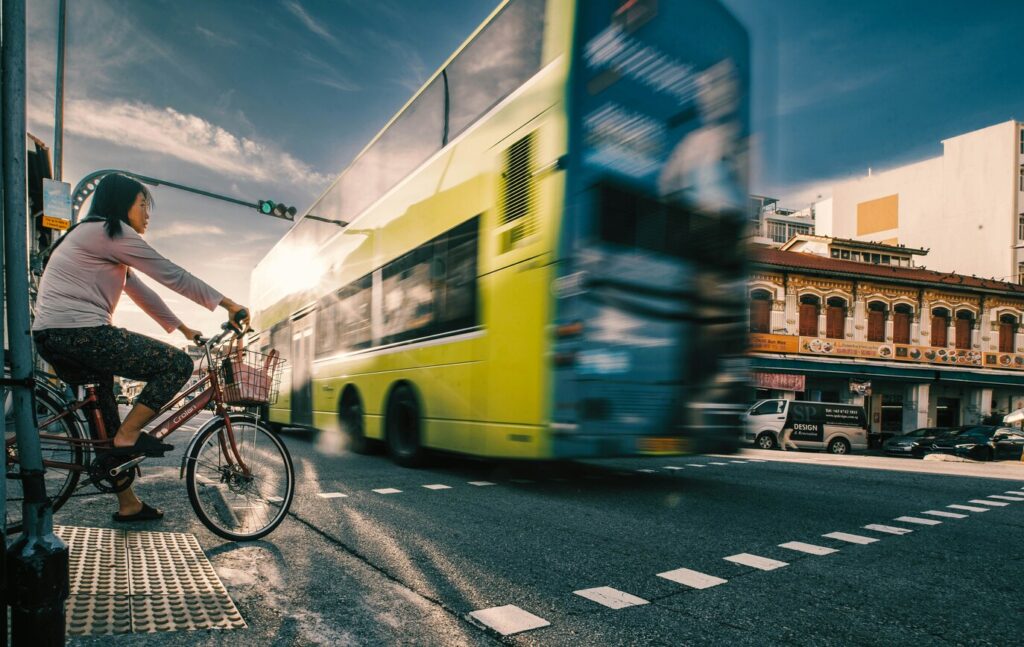
There’s never a dull moment in Singapore’s heritage districts, where every street corner offers a new adventure.
In Chinatown, immerse yourself in history at the Chinatown Heritage Centre or stroll along Pagoda Street, where souvenir shops and street stalls tempt you with everything from calligraphy brushes to local snacks. Savor authentic Cantonese cuisine at bustling eateries, or join the crowds during Chinese New Year when the streets come alive with lanterns and festivities.
Over in Little India, the energy of Serangoon Road is infectious—visit the ornate Sri Veeramakaliamman Temple, browse shops brimming with textiles and jewelry, and soak up the sights and sounds of Deepavali celebrations.
Kampong Glam, on the other hand, invites you to explore the Malay Heritage Centre, admire the golden dome of Sultan Mosque, and wander through vibrant streets filled with art, crafts, and delicious food.
For a deeper dive, join a Singapore walking tour that weaves through historic districts like Boat Quay, Chinatown, and Kampong Glam, offering fascinating stories and hidden gems along the way. Whether you’re shopping, eating, or simply exploring, these neighborhoods promise a rich tapestry of experiences.
Connecting the Districts
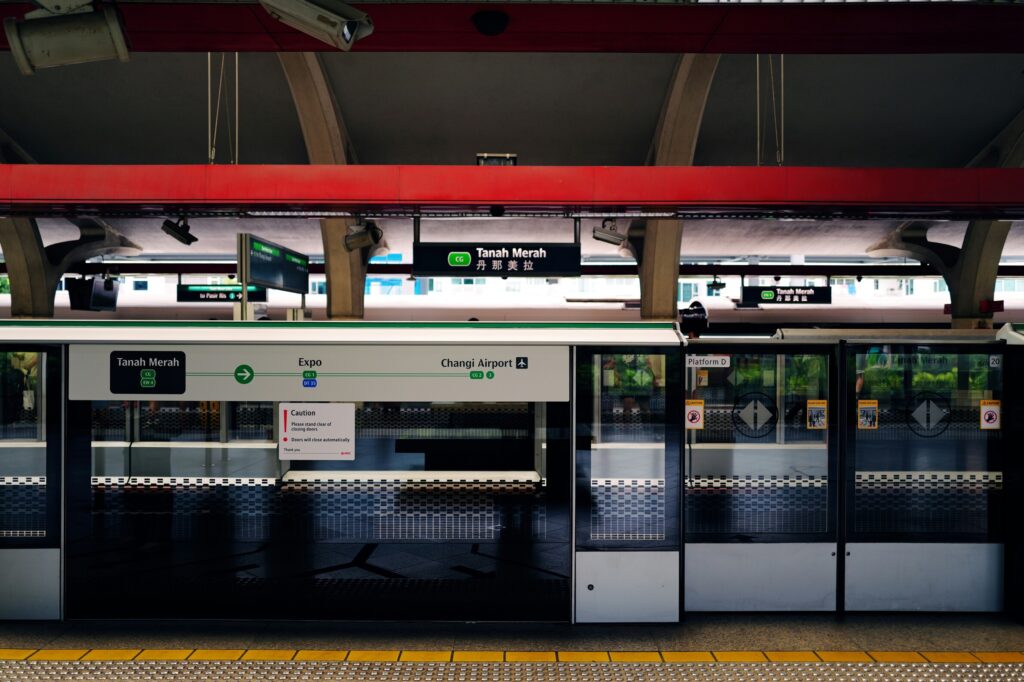
Want the ultimate Singapore travel guide experience? Embark on a trip through Singapore’s heritage districts with these itineraries:
- Half-Day: Start with temples and breakfast in Chinatown → MRT (North East Line) to Kampong Glam for shopping and lunch. Consider adding a visit to Tanjong Pagar, a nearby area with a unique mix of heritage and modern attractions.
- Full Day: Morning in Chinatown → afternoon at Sultan Mosque and Haji Lane → evening feasting in Little India. You can also include Clarke Quay for vibrant nightlife or Orchard Road for world-class shopping in your itinerary.
- Thematic Trails:
- Religious: Sultan Mosque, Sri Mariamman Temple, Buddha Tooth Relic Temple.
- Foodie: Chinatown hawkers → nasi padang → Indian curries.
- Shopping: Souvenirs in Chinatown → silks in Kampong Glam → bangles in Little India.
Travel Tip: The North East Line (NE4) MRT conveniently connects Chinatown, Little India, and other key districts, making your trip seamless. Booking tours or accommodations through our recommended links comes at no extra cost to you.
Accommodation Options Near Heritage Districts
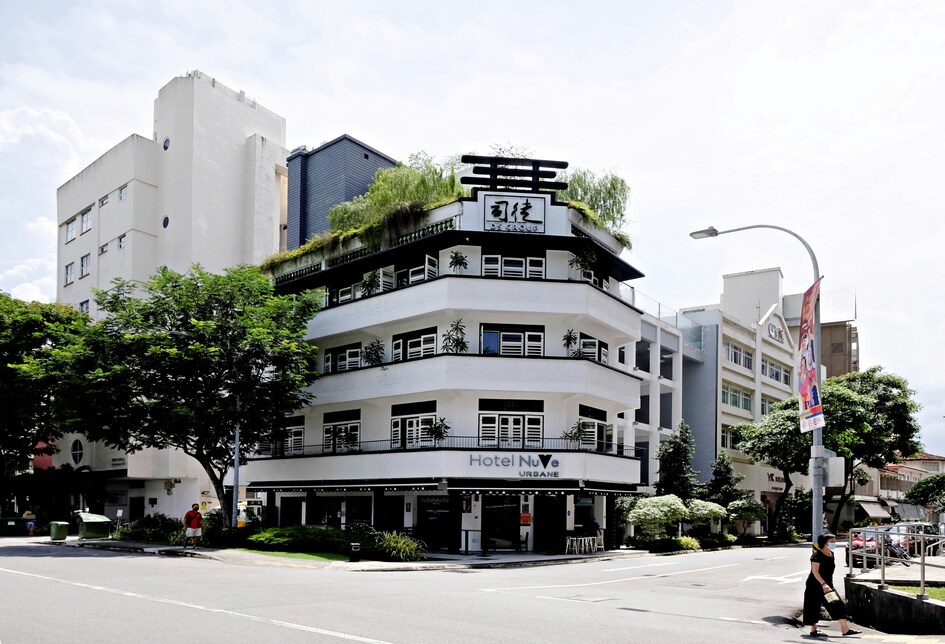
Staying near Singapore’s heritage districts means you’re never far from the action, with a wide range of accommodation options to suit every traveler. In Chinatown, boutique hotels like Ann Siang House and the Chinatown Hotel place you steps away from historic streets, traditional shophouses, and culinary hotspots. Little India offers welcoming stays at places like the Little India Hotel and Park Hotel Farrer Park, where you can enjoy easy access to vibrant markets and the district’s famous restaurants. Kampong Glam is home to unique options such as the Sultan Hotel and Hotel NuVe, many set in beautifully preserved heritage buildings that let you experience the city’s history firsthand. For something truly special, consider a stay in a converted shophouse, where the blend of old-world charm and modern comfort creates a memorable experience. Many of these hotels are within walking distance of iconic sites like Arab Street, Haji Lane, and the Malay Heritage Centre, making it easy to explore the best of Singapore’s heritage districts right from your doorstep.
Conclusion: Stepping Into Singapore’s Living History
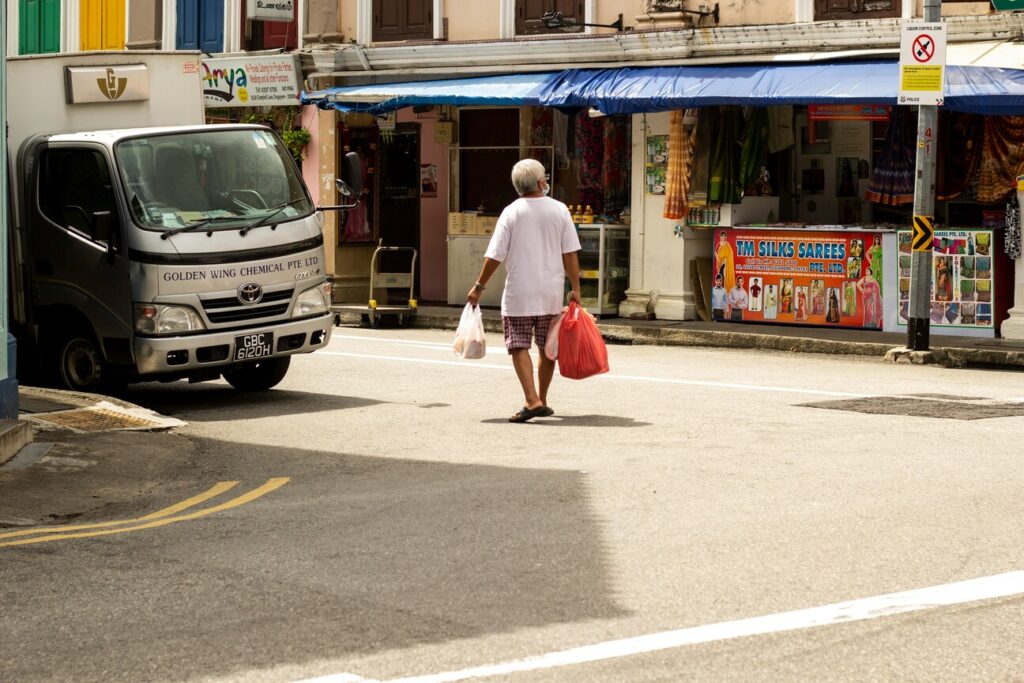
Exploring Singapore heritage districts isn’t just sightseeing—it’s stepping into the city’s living history. From the lantern-lit alleys of Chinatown Singapore to the golden domes of Kampong Glam and the spice-filled streets of Little India Singapore, these neighborhoods embody the city’s multicultural heart.
Forget the standard tourist path—wander, taste, and connect with the authentic Singapore.
Welcome to the neighborhood.


